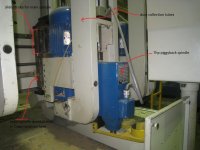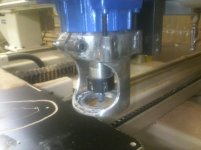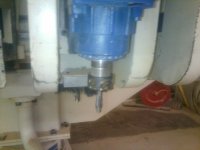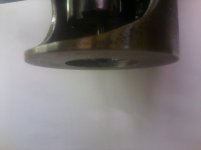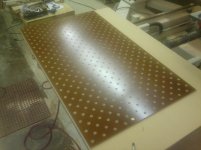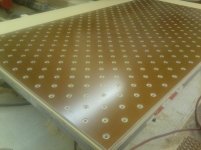macgyver
Stainless
- Joined
- Aug 2, 2012
- Location
- Pittsburg, KS
Hi guys, I just did a job where I engraved a design on a 4x8 ft sheet of acrylic and it needed to be very close on depth and it showed some imperfections in my table and spoil board. I have a plan to fix this but it made me think about a floating head or tool that I could use.
What I am looking for is a tool that has a follower foot that will run on the top surface of the part so that my depth of cut is the same no matter how worn out the spoil board or if even the material itself is inconsistent. I am only coming up with ones that are spring loaded and the depth of cut is dependent on hardness of the material and strength of the spring. I think the only way it will work on the materials I want to cut is to have a contact 'foot' or follower that rides on the material.
I vaguely recall seeing something like this on a router cutting ply at IWF many moons ago, but I am not having any luck finding it now. Have any of you seen one?
Thanks for the help,
Jason
What I am looking for is a tool that has a follower foot that will run on the top surface of the part so that my depth of cut is the same no matter how worn out the spoil board or if even the material itself is inconsistent. I am only coming up with ones that are spring loaded and the depth of cut is dependent on hardness of the material and strength of the spring. I think the only way it will work on the materials I want to cut is to have a contact 'foot' or follower that rides on the material.
I vaguely recall seeing something like this on a router cutting ply at IWF many moons ago, but I am not having any luck finding it now. Have any of you seen one?
Thanks for the help,
Jason



